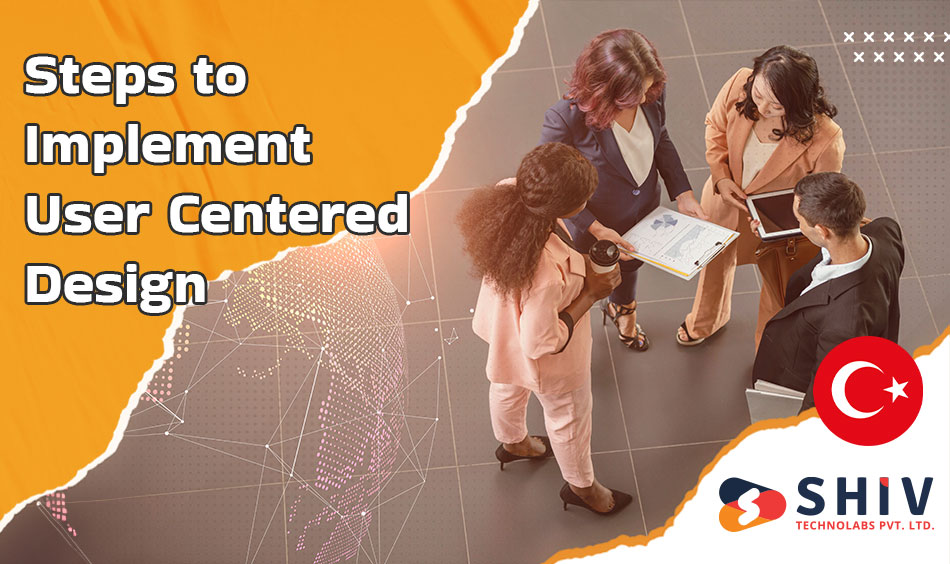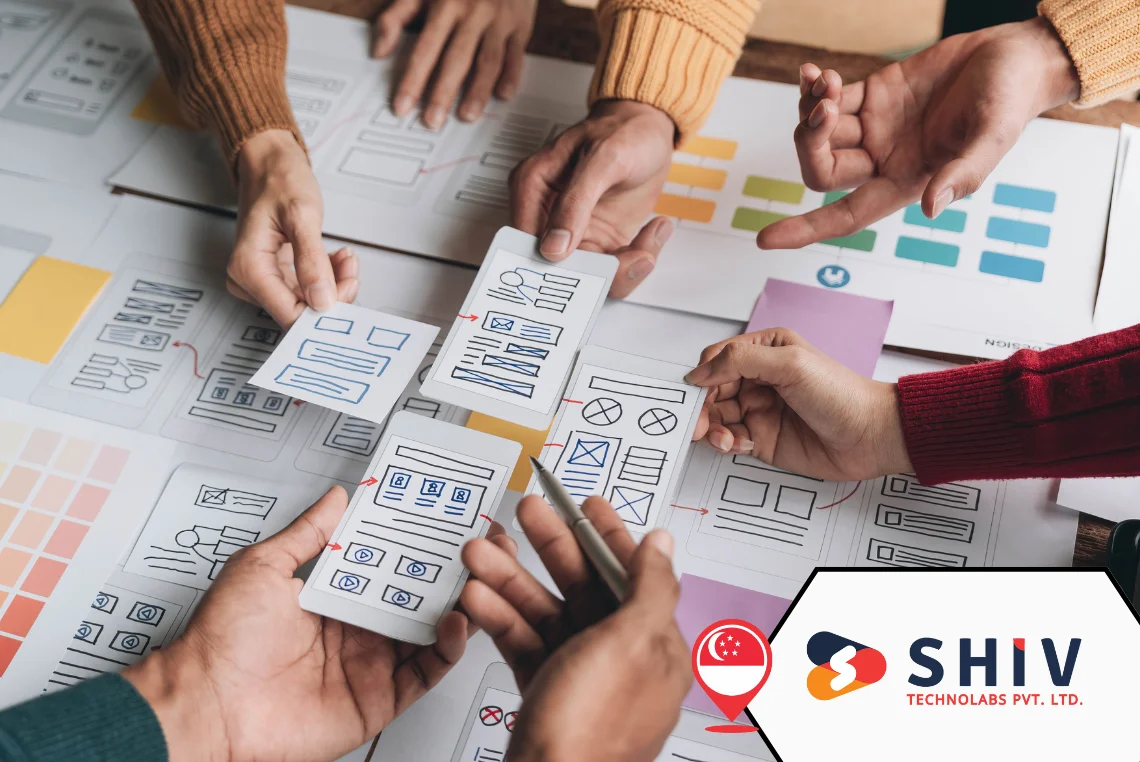Table of Contents
Understanding User-Centered Design (UCD) is crucial for tech startups aiming to create engaging digital products. UCD focuses on designing products that meet the specific needs and preferences of users. This approach not only enhances user satisfaction but also provides a competitive edge in the marketplace.
The Principles of User-Centered Design

User-Centered Design (UCD) places the user at the heart of the design process, ensuring their needs and preferences guide product development. This approach is essential for tech startups in Turkey, helping them stand out in a competitive market. By integrating UCD, startups can leverage UI/UX design services to create user-friendly interfaces that enhance the overall user experience.
The core principles of UCD include user focus, iterative design, and usability. User focus means prioritizing user needs throughout the design process. Iterative design involves continuously refining the product based on user feedback. Usability ensures the product is easy to navigate and intuitive. Embracing these principles allows Turkish startups to effectively use UI/UX design services to create products that resonate with their target audience.
# Key Concepts of UCD
User-Centered Design prioritizes the end user in every phase of the design process. This approach involves understanding user needs and creating solutions that address these needs effectively. Key concepts include user focus, iterative design, and usability.
- User Focus: This means placing the user’s needs and preferences at the forefront of the design process. By understanding what users want and need, startups can create products that are more likely to be adopted and enjoyed.
- Iterative Design: This involves continually refining the design based on user feedback. By iterating on the design, startups can make improvements that enhance usability and user satisfaction.
- Usability: Ensuring that the product is easy to use and intuitive is essential. A usable product reduces frustration and increases user engagement and satisfaction.
# Why UCD Matters for Startups
Startups benefit greatly from adopting UCD as it leads to higher user satisfaction and better product-market fit. This approach helps in creating products that users love and remain loyal to. Implementing UCD can also streamline the development process by minimizing costly design mistakes early on.
- Improved User Satisfaction: Products that meet user needs are more likely to succeed. By focusing on what users want, startups can create solutions that are well-received in the market.
- Competitive Advantage: A user-centric approach can set startups apart from competitors. Companies that prioritize UCD often find that they can attract and retain more users.
- Reduced Development Costs: Identifying and addressing issues early in the design process can save significant time and resources. This approach helps avoid costly redesigns and modifications later on.
Steps to Implement User-Centered Design
# Research and Understand Your Users
Understanding your users is the first step in UCD. This involves gathering detailed insights about their needs, behaviors, and pain points. Effective user research can guide the design process and ensure the final product aligns with user expectations.
- Surveys: Surveys are an excellent way to collect quantitative data on user preferences. They can help identify trends and common issues that users face.
- Interviews: Interviews provide deeper insights through one-on-one conversations with users. This qualitative data can reveal more nuanced information about user needs and behaviors.
- Analytics: Analyzing user behavior on your platform can uncover patterns and issues. This data-driven approach helps in making informed design decisions.
# Designing with Users in Mind
Designing with a user focus involves considering the user’s journey and pain points. The goal is to create intuitive and delightful user experiences. This step requires translating user research into actionable design decisions.
- Wireframes: Early sketches of the product layout. Wireframes help in visualizing the structure and flow of the product before detailed design begins.
- Mockups: Detailed designs showing the visual elements. Mockups provide a more concrete representation of the final product, allowing for feedback and refinement.
- Prototypes: Interactive versions of the design that can be tested with users. Prototypes help in identifying usability issues and gathering user feedback.
Tools and Techniques for User-Centered Design
Various tools can assist in the UCD process, making it easier to design, prototype, and test. These tools help streamline the workflow and enhance collaboration among team members. Selecting the right tools is crucial for effective UCD implementation.
- Sketch: A powerful design tool for creating wireframes and mockups. It is widely used for its ease of use and robust features.
- Figma: A collaborative design tool that allows multiple team members to work together. Its real-time collaboration features make it ideal for distributed teams.
- InVision: A prototyping tool that helps in creating interactive prototypes. It is useful for testing and gathering feedback on the user experience.
Usability Testing Tools
Usability testing tools are essential for gathering feedback and improving your design. These tools enable you to test your product with real users and identify any usability issues. Implementing feedback from these tests can significantly enhance the user experience.
- UserTesting: A platform for conducting remote usability tests. It provides video feedback from real users, helping identify usability issues.
- Lookback: A tool for recording user interactions and gathering feedback. It supports live interviews and session recordings, providing valuable insights into user behavior.
- Hotjar: A tool for heatmaps and session recordings. Hotjar helps in understanding how users interact with your product and identifying areas for improvement.
Popular UCD Tools and Their Uses
| Tool | Use | Key Features |
|---|---|---|
| Sketch | Designing wireframes and mockups | Vector editing, prototyping |
| Figma | Collaborative design | Real-time collaboration, prototyping |
| InVision | Prototyping | Interactive prototypes, user testing |
| UserTesting | Usability testing | Remote testing, video feedback |
| Lookback | Recording user interactions | Session recording, live interviews |
Challenges and Solutions in Implementing UCD in Turkey
# Common Challenges Faced by Turkish Startups
Implementing UCD in Turkey comes with its own set of challenges. Understanding these challenges is the first step toward overcoming them. By addressing these issues, startups can better integrate UCD principles into their design processes.
- Cultural Differences: Designing for a diverse user base with varying preferences can be challenging. It’s important to consider cultural nuances and regional differences in user behavior.
- Resource Constraints: Limited budgets and time for extensive user research can hinder UCD efforts. Startups need to find cost-effective ways to gather user insights and test designs.
- Lack of Awareness: Some startups may not fully understand the benefits of UCD. Educating the team about UCD principles and their impact on product success is crucial.
# Future Trends in User-Centered Design for Turkish Startups
Startups can adopt various strategies to overcome these challenges and successfully implement UCD. These strategies involve leveraging local expertise, focusing on key user groups, and prioritizing resource allocation effectively.
- Prioritize Key User Groups: Focus on the most important user segments to make the best use of limited resources. This targeted approach ensures that the most critical user needs are addressed.
- Leverage Local Expertise: Work with local designers who understand the cultural nuances. Local experts can provide valuable insights and help create more relevant and effective designs.
- Educate and Train Teams: Conduct workshops and training sessions to raise awareness about UCD. This can help in building a UCD-centric culture within the startup.
Challenges and Solutions in Implementing UCD in Turkey
# Emerging Trends in UCD
The field of UCD is constantly evolving, with new trends emerging that can further enhance user experiences. Staying updated with these trends can help startups maintain a competitive edge.
- AI-Driven Design: Using artificial intelligence to create personalized user experiences. AI can analyze user behavior and preferences to tailor the design to individual needs.
- Voice User Interfaces: Designing for voice interactions as they become more prevalent. Voice interfaces require a different approach to ensure they are intuitive and easy to use.
- Augmented Reality (AR): Integrating AR into design to create immersive user experiences. AR can enhance the way users interact with products and services.
# The Future of UCD in Turkey
Turkey is poised to become a leader in UCD, with an increasing number of startups recognizing its importance. The future of UCD in Turkey looks promising, with growing adoption and educational initiatives.
- Growing Adoption: More startups are adopting UCD principles to improve their products. This trend is likely to continue as the benefits of UCD become more widely recognized.
- Educational Initiatives: Increased focus on UCD in design education and training programs. Educational institutions are offering more courses and workshops on UCD, helping to build a skilled workforce.
- Collaborative Ecosystem: The rise of design communities and networks in Turkey. These communities foster collaboration and knowledge sharing among designers and startups.
Conclusion
User-Centered Design is essential for the success of tech startups in Turkey. By prioritizing user needs and continuously refining their products based on feedback, startups can create engaging and intuitive experiences that drive growth and loyalty. Implementing these principles and using the right tools can significantly improve a startup’s chances of success in the competitive tech landscape.
For startups looking to excel in this area, partnering with a leading UI UX Design company in Turkey can make all the difference. Expert UI UX Design Consulting in Turkey can provide the insights and strategies needed to create user-friendly, innovative products. By leveraging professional UI/UX design services, Turkish startups can achieve remarkable success and stand out in the global market.







![Web Design Hacks Used by Billion-Dollar Brands [How You Can Use Them Too!]](https://shivlab.com/wp-content/uploads/2025/03/Web-Design-Hacks-Used-by-Billion-Dollar-Brands-How-You-Can-Use-Them-Too.webp)













